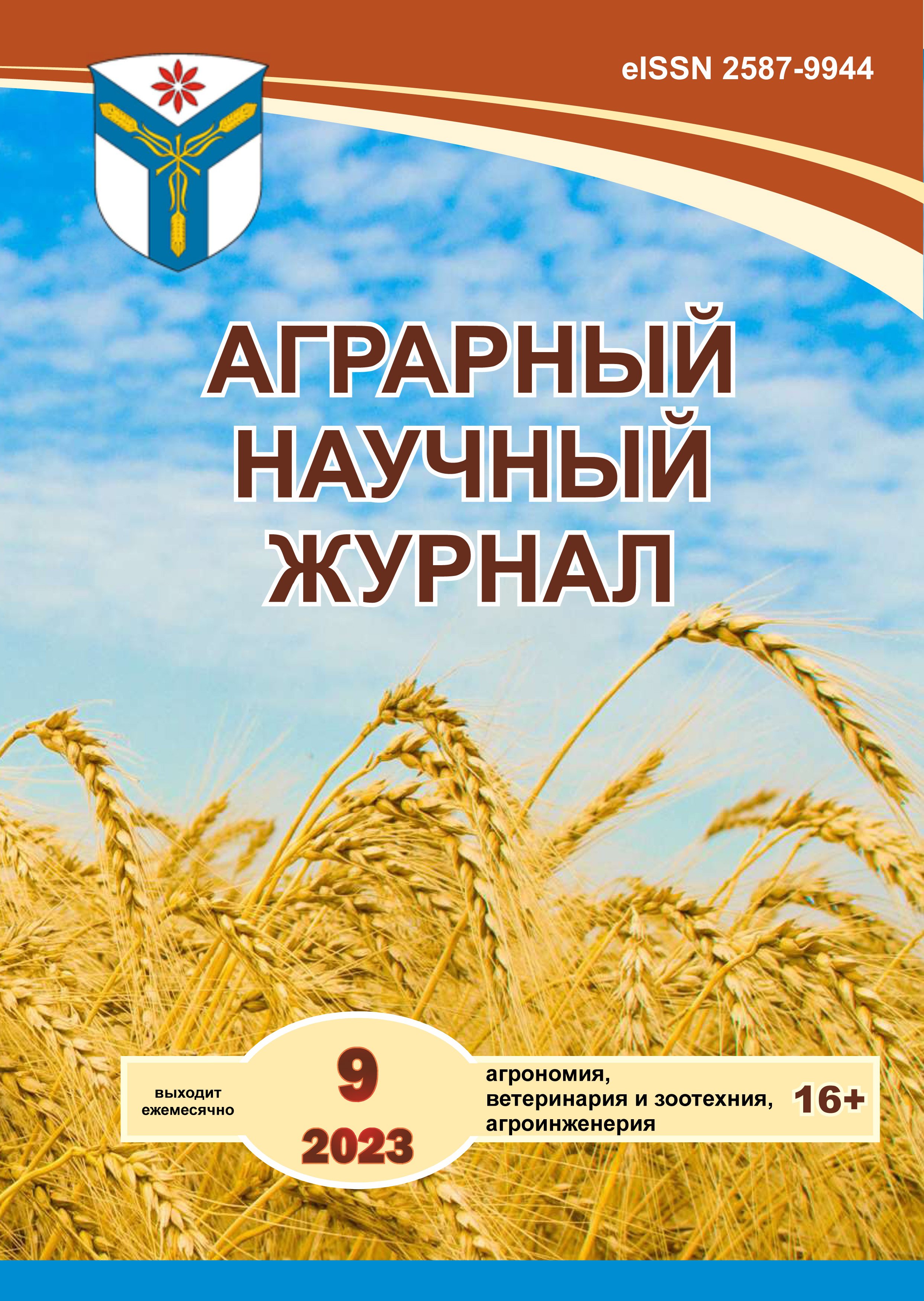The use of medicinal plants in the diets of lactating cows
DOI:
https://doi.org/10.28983/asj.y2023i9pp102-106Keywords:
diet, lactating cows, medicinal plants, radionuclides, excretionAbstract
In studies conducted on the territory of a farm belonging to the Novgorod Research Institute on Ayrshire cows during lactation, the use of plants with medicinal properties – crushed leaves of stinging nettle and fruits of red mountain ash for forcing the excretion of cesium and potassium radionuclides through the gastrointestinal tract and kidneys was studied. Seven groups of cows were selected for the research (n = 10 in each). For animals of the first three groups, in addition to the main feed, crushed nettle leaves were used (5, 10 and 30 g/head/day), for the next three groups, crushed rowan berries (5, 10 and 30 g/head/day) were used. For animals of the control group, a set of feeds was used, established and adjusted for this farm. It was found that when using herbal supplements in the diet, the concentration of caesium-137 in the urine of animals of all experimental groups significantly exceeded the control indicators. The content of potassium-40 in the urine of the fourth experimental group exceeds the control by 43%, in the rest the indicator is stable. In the feces of cows of the experimental groups, there is a significant increase in the concentration of both caesium-137 (from 31 to 136% relative to the control) and potassium-40 (from 24 to 166%). Accordingly, the release of radionuclides by the gastrointestinal tract and kidneys in the experimental groups is more active, relative to the indicators of the control groups. In some cases, more radionuclides were excreted than were ingested with food.
Downloads
References
Использование сорбентов для снижения дозовой нагрузки у крупнорогатого скота при внутреннем облучении цезием-137 и стронцием-90 в условиях радиационного загрязнения окружающей среды / Н. П. Лысенко [и др.] // Биоэкономика и экобиополитика. 2015. № 1(1). С. 101–104.
Ковалев И. И. Оценка эффективности выведения радиоцезия из организма адсорбирующими препаратами природного происхождения // Ветеринарная патология. 2015. № 3(53). С. 55–59.
Ковалев И. И., Лысенко Н. П., Гнездилова Л. А. Эффективность использования сорбентов для выведения радионуклидов из организма животных, выпасающихся на радиационно-загрязненных территориях // Биоэкономика и экобиополитика. 2016. № 1(2). С. 170–175.
Мирзоев Э. Б. Воздействие техногенных факторов на сельскохозяйственных животных при ведении животноводства в экологически неблагополучных регионах // Сельскохозяйственная биология. 2007. № 2. С. 73–78.
Овсянников А. И. Основы опытного дела в животноводстве. М.: Колос, 1976. 304 с.
Рубченков П. Н., Захарова Л. Л., Жоров Г. А., Обрывин В. Н. Изучение эффективности применения сорбирующих комплексов при сочетанном поступлении радионуклидов и токсичных элементов в организм животных // Ветеринария и кормление. 2014. № 3. С. 28–30.
Downloads
Published
Issue
Section
License
Copyright (c) 2023 The Agrarian Scientific Journal

This work is licensed under a Creative Commons Attribution-NonCommercial-NoDerivatives 4.0 International License.








